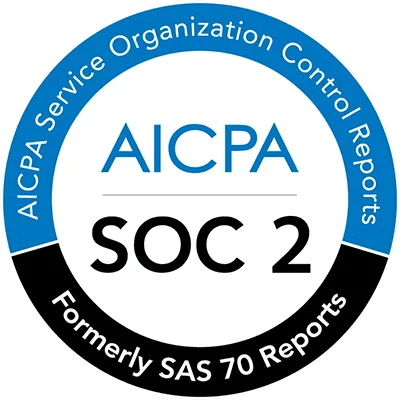A CIO and CTO’s Guide to Smarter System Documentation
Legacy systems are difficult to maintain and update, with organizations spending up to 80% of IT budgets maintaining existing systems while struggling to understand how they actually work.

Adam Tilton
For CIOs and CTOs managing legacy systems, the challenge of maintaining and updating critical infrastructure starts with a fundamental question: What exactly do we have? This is because legacy systems aren't just old code—they're mysteries wrapped in mission-critical functions.
Every CIO and CTO knows the challenge of maintaining and updating systems where the original developers have moved on or retired, and the vendors who helped build them are out of the picture. What's left is often a black box that keeps operations humming along but is increasingly difficult to understand and expensive to maintain.
This scenario plays out in companies everywhere, from Fortune 500s to mid-sized businesses. These systems work until they don't, or until the business needs them to do something new. That's when the real challenge hits: trying to make substantial changes to systems that have been quietly running for 10, 20, or even 30 years, only to discover that no one really knows how they work anymore.
The Traditional Approach: High Costs, Limited Returns
Faced with this documentation challenge, organizations often turn to major consulting firms to tell them what they have. Organizations already spend up to 60-80% of their IT budgets maintaining existing systems, and these discovery projects add another $2-10 million to the tab. The consulting firm arrives, takes six to eight months to analyze the systems, and delivers what amounts to a high-level audit—not the comprehensive documentation teams actually need.
This creates a vicious cycle. When competing for budget against projects that promise immediate business value, documentation initiatives are a tough sell: high cost, little ROI, and deliverables that often fall short. So the can gets kicked down the road, even though many enterprises are running on systems 10 - 20+ years old, with documentation that hasn't been meaningfully updated in a decade.
Meet Driver: Automatic Technical Documentation
This is where Driver transforms the traditional approach to documentation. Driver is an AI-powered platform that automates technical documentation. We built Driver so engineers can spend less time understanding code and writing documentation and more time building extraordinary things.
Driver Docs is our automated documentation platform that intelligently analyzes codebases, generates contextual documentation, and keeps documentation synchronized with code changes. Driver Studio offers teams structured workflows and intelligent assistance for producing documents for multiple audiences, including user guides, onboarding guides, and diagrams.
Not only does Driver actually solve the documentation problem, but it’s a fraction of the cost of traditional legacy modernization projects. Instead of asking for a massive consulting engagement, teams can tackle documentation through a manageable investment that often doesn't even need special budget approval.
Immediate Value Realization: Understand and Document What Exists
Companies using Driver see immediate benefits through two primary channels: reduced documentation effort and improved code understanding. Teams report up to 80% reduction in documentation-related tasks, freeing up valuable engineering time for core development work. This efficiency gain proves especially powerful for large-scale documentation projects.
For example, one customer enablement team cleared a backlog of 200 undocumented projects in just one month using only two engineers. Ran Landau, CTO of Splitit, shared, “As our company grows, we're getting further removed from our knowledge sources. Without proper tracking or documentation systems in place, there's a widening gap. Driver is not only closing that gap for us, but helping us create and update documentation significantly faster.”
Beyond One-Time Benefits
Driver's impact continues well beyond the initial documentation phase. This includes:
Building a Living Knowledge Base That Evolves with Your Code
When teams inherit legacy systems, Driver helps unlock critical institutional knowledge. The system automatically captures and organizes the information buried in these legacy systems, creating a living knowledge base that evolves with your codebase. This means teams can confidently update and maintain systems without being worried they’ll break critical functionality or lose historical context. It also means teams can significantly reduce the cost of supporting these applications. Recently, a financial services company used Driver to map out their complex microservices after losing key team members. This led to a 40% reduction in their modernization timeline and got new team members up to speed significantly faster.
Mitigating Risk and Uncertainties
Understanding systems changes how teams approach risk. Without clear documentation, organizations resort to trial and error, reverse engineering, and best guesses that often lead to scope creep and budget overruns. Driver gives teams an X-ray view of their systems—exposing legacy code patterns, highlighting potential pitfalls, and spotting integration challenges before they become problems. This deeper understanding means more accurate planning, more targeted solutions, and fewer surprises. Instead of discovering issues mid-project when they're expensive to fix, teams can identify and address risks early, keeping modernization efforts on track and on budget.
Faster Engineer Onboarding
Onboarding new engineers to complex systems traditionally requires 3 - 6 months of shadowing senior developers, parsing outdated documentation, and piecing together how things work through trial and error. Driver transforms this experience by giving new team members an immediate, comprehensive view of the systems they'll be working with. Engineers can explore code structure, understand key functionality, and identify critical dependencies from the start. This accelerated understanding means teams can shift their onboarding focus from basic system comprehension to actual development work, getting new engineers contributing meaningful code faster while reducing the burden on senior team members.
The Path Forward
For CIOs and CTOs, Driver presents an opportunity to shift left and shrink critical project phases significantly. Assessment, planning, and legacy system analysis can be dramatically reduced. Technology selection becomes more focused because teams are more knowledgeable about their systems. Documentation for new developments can be generated in hours rather than weeks or months. Teams can identify and address risks before they become expensive problems, while new engineers can start contributing meaningful code in days rather than months. A comprehensive understanding of legacy systems flows through to testing and training, creating efficiencies throughout the system lifecycle.
Leading consulting firms are also breaking the traditional documentation cycle by using Driver to quickly deliver comprehensive documentation at a fraction of the cost. By streamlining the discovery process, consulting firms are overcoming the traditional barriers to funding legacy modernization projects and using Driver as a catalyst to revenue.
Interested in understanding how Driver can help you manage your team’s legacy code? Fill out this form and we’ll schedule a demo.


